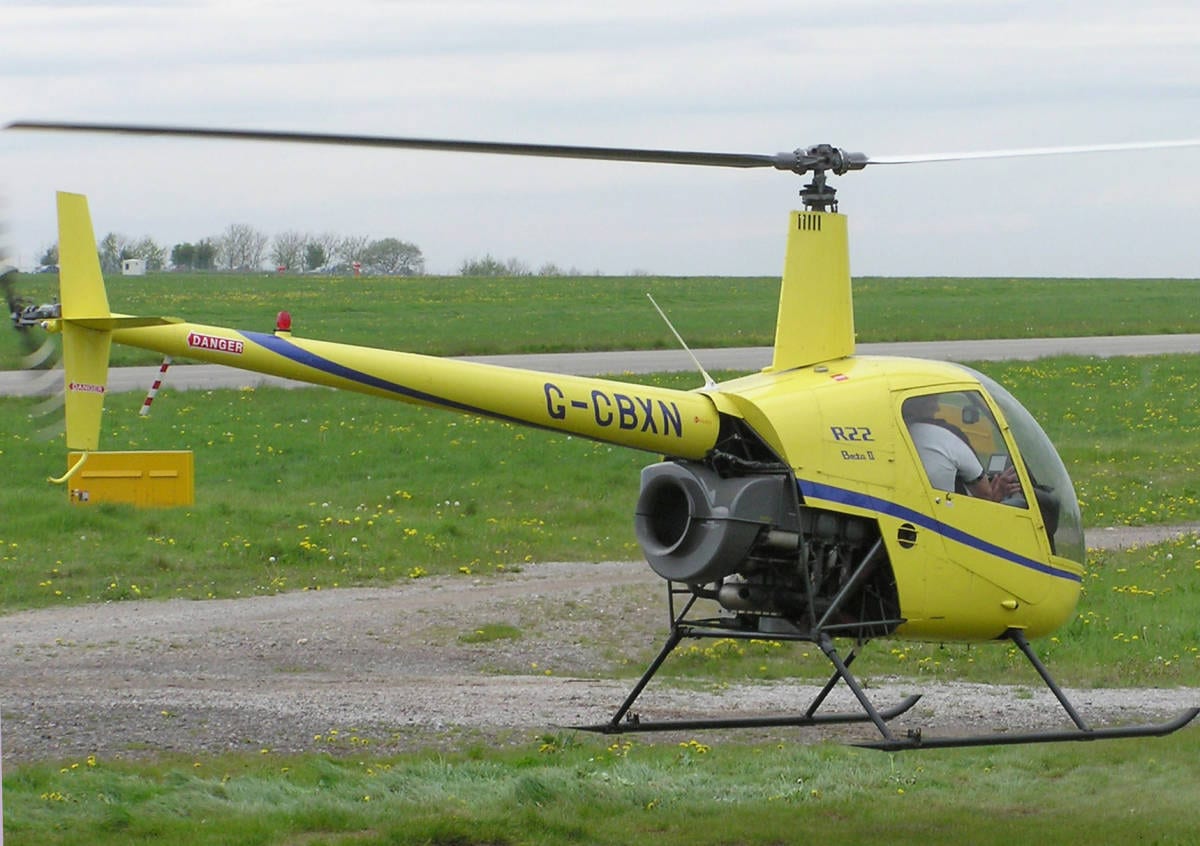
National Transportation Safety Board investigators have issued their probable cause statement regarding the helicopter crash and death of a southern Utah pilot and his passenger. Washington County 38-year-old helicopter pilot and instructor Robin Venuti and his brother-in-law, Beaver resident Albert Rubio, 36, were killed in a crash when their Robinson R-22 helicopter went down in a mountainous area near the Emery County – Grand County line. The crash occurred on Sunday, April 6, 2014.
The family of Venuti said that the purpose of the flight was to look for elk antlers that were shed during the year. Indications are that the helicopter was flying at a very low altitude.
After Venuti and Rubio didn’t return from the flight when they when they were expected, the Utah Department of Public Safety initiated a helicopter search using infrared cameras on Sunday evening. The effort was suspended around midnight. The search resumed Monday morning. A Utah Department of Public Safety helicopter located the crash site on the west side of Desolation Canyon, about 40 miles north of Green River, about 2:30 p.m. the day after the aircraft went missing.
Investigators confirmed that there were no survivors. The bodies were recovered and transported by a Department of Public Safety helicopter to an Emery County off-road ambulance at 6:45 p.m.
The wreckage of the R-22 two-person helicopter was located in what searchers described as the side of a gully in rugged terrain. The onsite wreckage investigation revealed that the main rotor blades of the helicopter did not appear to have been rotating at the time of the crash. No damage was visible to the rotating components of the helicopter’s airframe.
Water in aviation fuel can cause the engine to either sputter or completely fail. The gascolator—also referred to as the fuel main line strainer, sediment bowl or fuel strainer—acts primarily as a fuel drain for water and small particles of sediment. The gascolator is found at the lowest point of the aircraft’s fuel system, usually located below the level of the aircraft’s carburetor and fuel tanks in helicopters.
The NTSB investigator on scene stated that the gascolator container itself was stained an orange/brown color at its base and along the sides. Fuel drained from the gascolator was colorless but murky and lacked the strong odor normally associated with aviation fuel. Aviation fuel—100 low lead—that is used in this type of aircraft is typically colored with a blue tint so that the pilot during the pre-flight inspection can distinguish whether or not the fuel is contaminated.
A water/alcohol-indicating paste test conducted by the NTSB revealed that there was water present in the helicopter’s fuel. Investigators concluded that if the pilot had drained fuel from the helicopters fuel tank or gascolator before the flight, he would have most likely discovered the contamination.
Investigators stated that other than the contaminated fuel, post-accident examination of the airframe and the helicopter’s engine showed no evidence of further conditions that would have caused the helicopter to malfunction.
The investigation also revealed the source of the contaminated fuel. Venuti kept aviation fuel in a barrel on his property. He would pump the fuel into 5-gallon plastic cans to provide fuel for the helicopter. The fuel in the barrel was tested and a large amount of water contamination was discovered. One of the cans tested contained a mixture of about 50-50 aviation fuel and water, and another contained a mixture of about 85 percent aviation fuel and 15 percent water.
Since their was no apparent damage or malfunction regarding the main rotor blades and rotating components of the airframe, investigators concluded the helicopter crash was most likely due to the engine experiencing power loss caused by water contamination of the fuel. Since Venuti was looking for shed antlers on the ground, there was a high probability he was operating the helicopter at a low altitude and had little time to react or find a safe place to land when the engine lost power.
Venuti grew up in Escalante, Utah. His career began at HeliTech based out of Riverside, California. He was certified as a private, commercial, and certified flight instructor in various aircraft and was qualified as a lead instructor. He was a helicopter instructor to many students in southern Utah. Venuti owned and operated Inter-Island Helicopter in Hanapepe, Kauai. He is survived by his wife, Dana, and their two daughters, Lexi and Bella.



